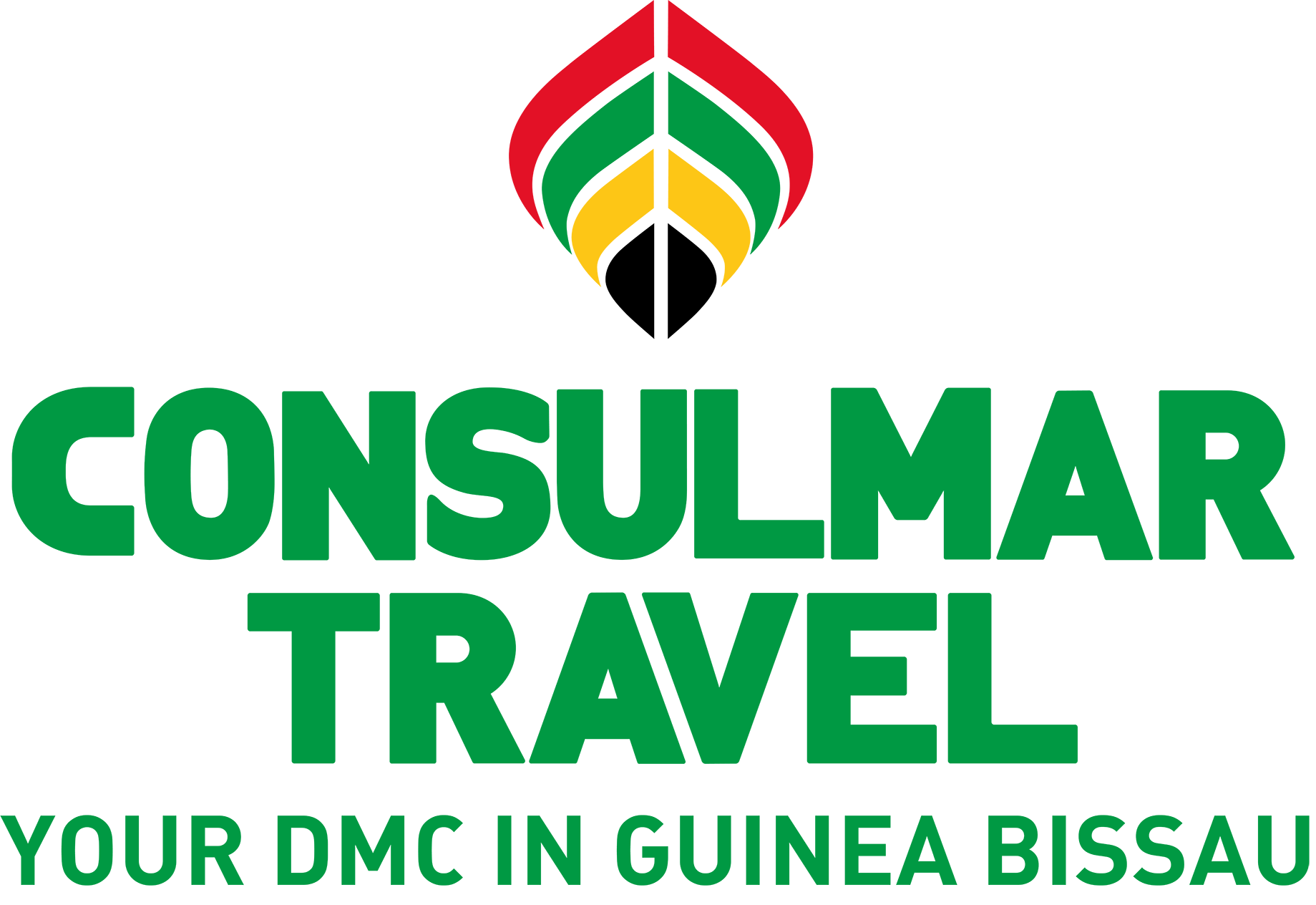🧬 1. Key ecological data
🐦 Number of species
According to updated listings (Avibase 2024), Guinea‑Bissau hosts:
- 510+ recorded bird species
- At least 30 migratory shorebird species documented through bird ringing.
- Threatened resident species such as the African picathartes (Picathartes gymnocephalus).
🧭 Routes and distances
- Limosa lapponica (bar-tailed godwit): up to 11,000 km non-stop from Alaska to the Pacific during its global migration.
- Calidris canutus: breeds in Siberia and travels to Guinea-Bissau on a route that can exceed 7,000 km.
🏞️ 2. Critical habitats for migration
🏝 Bijagós Archipelago
- Declared a Biosphere Reserve in 1996 and a UNESCO World Heritage Site in 2025.
- It hosts the largest intertidal area in West Africa, essential for shorebirds such as Numenius phaeopus (whimbrel) and Calidris ferruginea (curlew sandpiper).
- Studies show that more than 870,000 birds winter in this area annually ([Dodman & Sá, 2005]).
🌀 Cacheu River Mangroves
- Natural Park and Ramsar site since 2015.
- Refuge for aquatic birds (herons, ibis) and a passageway for migrants during rainy seasons.
🌿 Savannah and rice fields (Bafatá and Oio regions)
- Crucial for species such as Ciconia ciconia (white stork) and Milvus migrans (black kite).
- They also host intra-African migrants who follow seasonal patterns within the continent.
🔬 3. Research and banding: what we know
Between 2022 and 2024:
- 1,238 birds were marked in the Bijagós with coded rings.
- 338 observations were recorded outside the country, allowing for the establishment of migratory connections with 19 countries.
Main findings:
- High fidelity of some species to the Bijagós (they return to the same site every year).
- Connectivity with the Wadden Sea (Netherlands and Germany), a “natural airport” before reaching Africa.
- Unexpected winter observations of Limosa lapponica and Calidris canutus in Mauritania, suggesting secondary intracontinental movements.
📚 4. Featured species
| Common name | Scientific name | Migration status | Ecological comment |
|---|---|---|---|
| Fuselo | Limosa lapponica | Palearctica | Champion non-stop flight, breeding in Siberia |
| Maçarico-galego | Numenius phaeopus | Palearctica | Nests in Iceland; winters in Bijagós |
| Pilrito-de-bico-comprido | Calidris ferruginea | Palearctica | Very numerous in muddy areas |
| Garajau-comum | Thalasseus sandvicensis | Coastal/migratory | High connectivity with breeding colonies in Europe |
| Perna-vermelha | Tringa totanus | Mixta | Nests in Scandinavia; common in mangroves |
| Gaivina-comum | Sterna hirundo | Coastal/migratory | European breeder, sighted in Bijagós on passage |
| Ciconia branca | Ciconia ciconia | Palearctica | Can be seen in rice fields during the dry season |
| Milano negro | Milvus migrans | Intra-African and migrant | Breeds in Eurasia; spends the dry season in Guinea-Bissau |
⚠️ 5. Threats and challenges
Despite its biodiversity, Guinea-Bissau faces increasing pressures:
- Habitat loss due to agricultural expansion and overfishing.
- Climate change: causes alterations in food availability and migratory phenology.
- Lack of technical and human resources for continuous monitoring.
🌱 6. Birdwatching tourism with a positive impact
Birdwatching tourism is a key tool for conservation, if managed properly. It allows for:
- Fund research and conservation projects.
- Integrate local communities in the protection of ecosystems.
- Raise awareness among visitors about the country’s global importance.
Consulmar Travel, together with local guides and biodiversity experts, offers tours in the Bijagós archipelago and other key regions, designed with sustainability and environmental education in mind.
👉 If you’re interested in birdwatching in Guinea-Bissau, contact us and we’ll help you explore the most interesting birdwatching spots and routes.
📧 [agencia@consulmartravel.wg]
📅 7. When to go birdwatching in Guinea-Bissau?
| Season | Migratory Activity | Comment |
|---|---|---|
| September–November | Arrival of waders and settling in | Low waters, ideal for observation |
| December–February | Winter stay, intensive feeding | High concentration of species |
| March–April | Return migration northward | Birds in partial molt and singing |
🔗 8. Conclusion
Guinea-Bissau is not just an exotic destination: it’s a pillar of global migratory connectivity. Birds that cross seas, deserts, and continents depend on its ecological integrity. Birdwatching here is not just a natural spectacle: it’s a way to support science, conservation, and local development.


